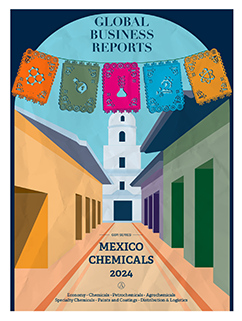"More attention needs to be focused on critical mineral recovery from aqueous mine wastes."
RELATED PUBLICATION
ARTICLES FROM THIS PUBLICATION
Critical Minerals: Sustainable Sourcing of Critical Minerals from Unconventional Resources to Enable the Energy Transition

Image by Yasin Arts at Adobe Stock
Expert Opinion Article by Anne Thatcher, Senior Vice President and
Jeffrey Gillow, Vice President, Technical Expert – Geochemistry, Arcadis

Shifting the world’s energy generation paradigm toward one based more heavily upon renewables (e.g., solar, wind, battery, hydrogen and nuclear) will require a significant increase in the supply of critical minerals. These include lithium, nickel and cobalt for battery cathodes; rare earth elements for electric vehicle (EV) and wind turbine motors (neodymium, boron, iron permanent magnets); and semiconductor metals such as gallium, germanium, indium and tellurium for photovoltaics. The International Energy Agency reported in their July 2023 Critical Minerals Market Review that, from 2017 to 2022, there was a tripling in demand for lithium, a 70% increase in demand for cobalt, and a 40% rise in demand for nickel. This same report pointed to China’s export restrictions on gallium and germanium (the price of this element has increased 40% since 2020). Copper is also on the list of critical minerals, and concern is also growing about its availability to enable global electrification – S&P Global recently predicted a chronic shortfall of copper from 2024 onward of 20% of that required to achieve net-zero goals. For a successful energy transition, in terms of timeline (i.e., meeting the Paris Agreement greenhouse gas emission reductions of 43% by 2030 and net zero input to the atmosphere by 2050) and public adoption (i.e., EVs available at price points for most consumers), critical mineral sources will need to be abundant and diverse.
There are challenges on two fronts for a successful energy transition in the US that miners can address: Sourcing critical minerals, many of which are limited in terms of conventional ore sources within countries that are friendly trading partners with the US, and finding these elements in sufficient supply to meet demand and prevent deceleration of the pace of the transition. A third challenge for the US is the tension between constructing new mines (in 2022 domestic metal mine production was 6% lower than in 2021) and the ravenous need for metals that clean energy technologies require (this was highlighted in the editorial in Nature, May 2023 (Vol. 615)). A solution exists today, however, that requires close attention – the sourcing of critical minerals from unconventional resources such as solid mine wastes (waste rock, leached ore, tailings) and mill residues (e.g., copper and gold beneficiation wastes such as dusts, slags, and refinery slimes). These materials are currently stockpiled at hard rock mines across North America and managed as waste materials at operating and closed mines. The timeline to getting supply from these sources to the market can be fast, often with a favorable environmental footprint.
More attention also needs to be focused on critical mineral recovery from aqueous mine wastes (acidic leachates from these stockpiled solids). Current water treatment practices focus on “recovery” of metals (through lime neutralization of acidic waters) to limit impacts of metal constituents in waters that contact ore on the surrounding environment; the water treatment residues are typically landfilled. Why not go a step further to valorize the metals recovered from mine water treatment through thoughtful treatment and separation to meet the demand for these difficult to source critical minerals?
There is currently an entire value stream at operating copper, gold and other metal and non-metal mines, that can sustainably source critical minerals for the energy transition. A resilient supply of critical minerals exists within this value stream. Getting this supply to the market will require technical skills that combine the science and engineering disciplines – with geochemists and geologists working together with mineral processing engineers, metallurgists and water treatment engineers – to first understand the occurrence of critical minerals across the value chain and then to identify how to recover and concentrate these elements. Existing water treatment, extractive metallurgy, and beneficiation processes may be pressed into service or redirected to achieve critical mineral recoveries that support the costs of implementing these recovery approaches.
Other tangible benefits beyond the saleable value of the recovered elements need careful examination, however, as water treatment processes may be optimized, and long-term water treatment costs offset by capitalizing on these opportunities. Similarly, the environmental footprint of beneficiation wastes may be reduced through critical mineral recovery. All of these benefits to the mine operator and stakeholder community mean that unconventional resources of critical minerals should be closely evaluated – our clean energy future in North America may depend upon it.












